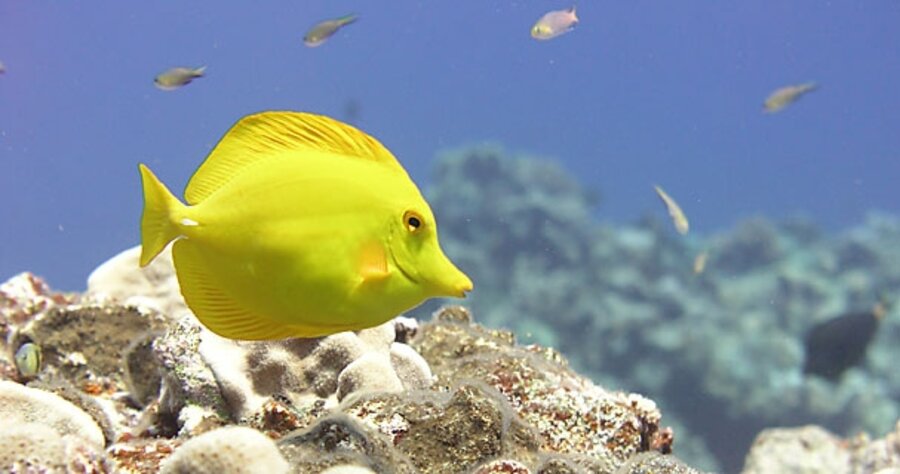Bush orders new protections for Pacific marine seascapes
Loading...
A century after Teddy Roosevelt started preserving landmarks and landscapes as national monuments, President Bush has swept nearly 200,000 square miles of seascapes into three new national marine monuments around US Pacific territories.
The much-anticipated action this week follows a similar move two years ago along the northwest Hawaiian islands. Taken together, the two efforts extend tough environmental safeguards to 355,000 square miles of islands, reefs, atolls, and their surrounding waters. Those included in the latest announcement represent some of the most remote, pristine reef systems in the world.
The response from several environmental groups, long critical of the administration on a range of other issues, has been swift and effusive.
“The president has given the Earth a Texas-size gift,” says Diane Regas, who heads the oceans program for the Environmental Defense Fund in New York. Tuesday’s action “opens a new era in ocean protection.”
Others say they see the move as elevating marine conservation to a level of prominence long dominated by efforts to preserve land-based ecosystems.
The areas receiving the monument designation include:
• Rose Atoll, a ring of pink-hued coral near American Samoa.
• The Marianas Marine National Monument, which encompasses the three northernmost islands in the northern Marianas chain, as well as the entire length and breadth of the Mariana Trench – the deepest rift of any on the ocean floor.
• The Pacific Remote Islands National Monument, an array of seven remote islands and atolls in the central Pacific.
The designations prohibit commercial fishing within monument boundaries. Sport fishing, scientific research, and similar activities would require case-by-case permits showing, among other things, that the activities can be conducted sustainably.
The boundaries extend seaward to 50 miles, rather than the full 200 miles representing the country’s exclusive economic zone. Marine scientists specializing in corals, fish, and seabirds strongly favored extending protections beyond three miles. But there was far less agreement on the added value of extending protections beyond 50 miles, says James Connaughton, chairman of the President’s Council on Environmental Quality.
It’s similar to the boundaries around the northwest Hawaiian islands, now known as the Papahanaumokuakea Marine National Monument. The line could shift as researchers learn more about the ecosystems involved, Mr. Connaughton suggests.
Another apparent oddity: Protections for the Mariana Trench extend only to the trench itself, not the waters above it. Connaughton notes that scientists were most interested in the geology of the trench and its surroundings, including undersea volcanoes and hydrothermal vents, and the communities of unusual forms of life they support. The waters above the trench “weren’t relevant to the resources we wanted to protect,” he says.
The tight restrictions on sport fishing rankle some. “There is no scientific basis for prohibiting recreational angling in these areas,” says Mat Dunn of the National Marine Manufacturers Association in Washington, though he acknowledges that these ecosystems may be special.
Despite the enthusiastic response to Mr. Bush’s designations, analysts point to several challenges in managing the new monuments – a task that will fall to the Obama administration. Among them: interagency squabbles and the money needed to monitor activities in the remote monuments and enforce regulations.
Still, these don’t dampen the enthusiasm for Bush’s designations. “We see this as an outstanding act of presidential leadership,” says William Chandler of the Marine Conservation Biology Institute in Bellevue, Wash.





